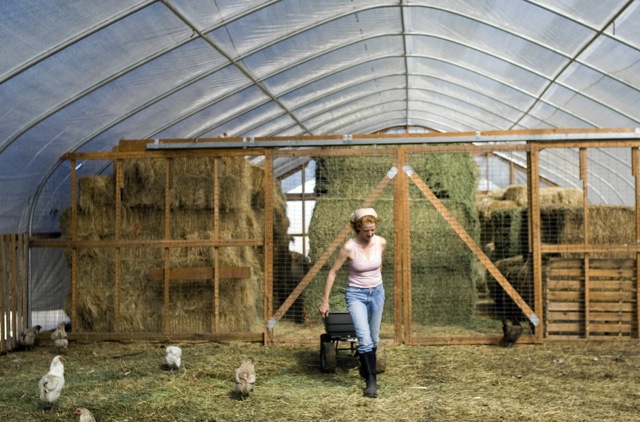
primary-image, l
(post, Kathleen Bauer)

primary-image, l
Chrissie Zaerpoor of Kookoolan Farms continues the series (part one is here) about trade-offs, transitions and new beginnings on their farm in Yamhill: It always seems that just when you think you have everything figured out and under control that nature reminds you otherwise. Earlier this spring, we were milking cows one morning and one was missing. After almost an hour of searching, we found her drowned in our little creek. The cows have had continuous access to this creek for more than two years and have never had any trouble with it; the water was not particularly high; it's a very small creek, only six feet wide or so and no deeper than boots for most of its length, but it does have one deep swimming hole in it. Poor thing, if she had found her way a few feet up or downstream, she would've been fine. But finding a pet cow dead is just the beginning: hauling a 900-pound carcass out of a creek is a serious engineering challenge requiring heavy equipment and almost a whole day's work to remove her body, bring it up the hill, dig a deep hole, and bury her. Thank goodness for good neighbors and their backhoe. We replaced her with a new cow, "Token," who is just a lovely, lovely, gentle cow. We wouldn't have met Token if not for the other drowned cow. We have built two very large greenhouses (top photo) with our own hands: 30 by 144 feet, and 30 by 98 feet, and have had Mother Nature crush them both, first by wind and then by snow. We thought we needed the greenhouses for hay storage and for meat chicken shelters; instead, we replaced the greenhouses with an irrigation system that uses our gray water from the milking parlor and poultry processing plant to irrigate our new 100-tree mixed fruit orchard that we planted this spring. We wouldn't have the orchard if it weren't for the end of the greenhouses. Similarly, some of you may remember our dreadful behemoth first delivery turck, the Snap-On Tool truck. This truck cost $4,000 when we bought it, had only one seat and seatbelt, no heating, no air conditioning, and numerous mechanical problems and failures that cost over $5,000 to repair in the first year and added nothing to its value. Deciding to retire the dreaded beast and purchase a much nicer and newer Isuzu NPR commercial truck with three seats and seatbelts, heater and air conditioning, and a 14-foot delivery box, felt very scary in October, 2008: nobody was buying cars or trucks then, remember? But the new truck has been wonderfully reliable, and when we filed our taxes we were surprised to find we had been "stimulated" to the tune of being able to write down 50% depreciation the first year for a business vehicle purchase. That stimulus bonus funded the stainless steel wall remodelling of our poultry processing plant, hopefully opening up the possibility of having it licensed half of the year for poultry processing, and half of the year as a winery for meadmaking: this became a big factor in making our biggest "new beginnings" decision of all: to transition away from Cornish cross chickens. Top photo by Frederick Joe, The Oregonian._